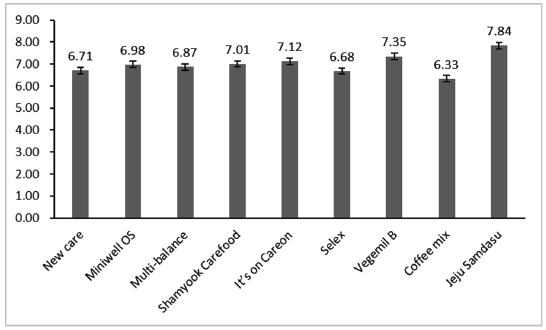Abstract
To investigate the effect of several elder-friendly foods on oral health and suggest guidelines for proper food intake. Six elderly-friendly foods (liquid type) and two control groups (mineral water and mixed coffee) were selected for this study. The pH of the food was measured using a calibrated pH meter, and the titratable acidity was determined using 1 M NaOH until 7.0 (TA 7.0). The screening method suggested by the International Organization for Standards was performed using an undersaturated hydroxyapatite solution to determine the difference between the initial and final pH of the screening solution (△pH). In addition, the sugar content was measured and expressed as Brix (%). All the elder-friendly foods tested in this study showed a neutral pH (6.68–7.35), similar to mineral water (pH 7.84). The range of TA 7.0 values was 0.00–0.54 ㎖. The changes in pH determined using the screening solution confirmed that the largest change in pH was found in Careon (△pH 1.14±0.02), which has no erosive potential. Nevertheless, all elder-friendly foods had higher sugar content than the negative control group. Low tooth erosive potential was found in elder-friendly foods, but these foods showed high sugar content.
Figures & Tables

Fig. 1. The pH values of control groups and experimental groups used in this study. The value of vertical axis means pH.


